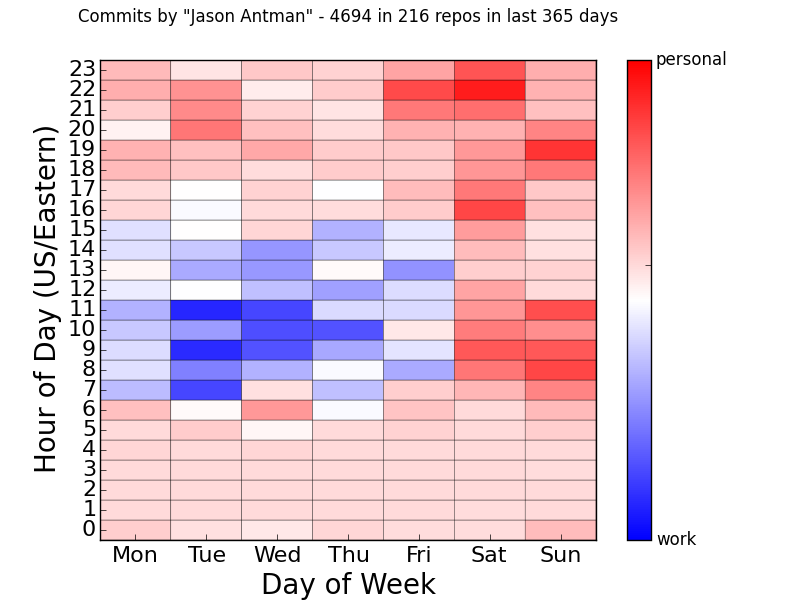I was thinking the other day - as I was pushing out some final code reviews for work at 11PM before taking a day off - about how much work I do outside of “work hours”. And the answer is, I don’t really know, especially when it comes to projects that I really enjoy and find interesting. So, I decided to have some fun with GitPython and find out.
The result of this was whendoiwork.py. It’s a pretty simple script, and also makes some pretty big assumptions, but I found the results interesting. Given some local directories which contain git clones of my work repositories, and some which contain clones of my personal repos, it iterates over all* of the commits in them by me (going by the git author name) in the last N days (default 365); it counts commits to personal repositories as +1 and to work repositories as -1, and adds them to buckets per hour of day, per day of week. It then uses matplotlib to build a heatmap, with the maximum commits per hour for work repos in blue and the maximum per hour for personal in red.
I can’t vouch that it’s 100% accurate, but the results were interesting to me; while it seems like I tend to do a fair amount of work in the evenings, compared to work on personal projects, all of my work for my employer is well contained in my normal 7-3 work day.
Here’s an example of the output of this script, for my own work, run with:
./whendoiwork.py -v -a /home/jantman/GIT -b /home/jantman/work/git -b /home/jantman/work/git/ops -d 365 -t 'US/Eastern' --repoAlabel personal --repoBlabel work
Note that this iterates over every commit in all of the git repos it finds, possibly multiple times. On my own system (9G of git repos with a few hundred thousand commits), this took about 2 minutes.

If you find any bugs/issues with it, please pass them along by opening an issue.
Comments
comments powered by Disqus